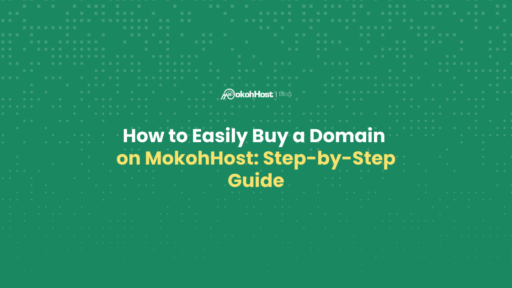Knowing when to use a domain vs a subdomain for branding is important for building a strong online presence and improving SEO performance. Your domain is the key to helping people find your business online and plays a significant role in brand recognition.
A domain name is vital for a new website as it makes your site easily discoverable and memorable. On the other hand, subdomains are ideal for organizing content effectively and experimenting with new features without impacting the main site.
Choosing between a domain vs a subdomain for branding is one of the first significant decisions when launching a website. This choice can affect branding, SEO, and long-term growth, so it’s essential to consider your options carefully. Developing the right domain or subdomain strategy can enhance brand awareness and create a stronger connection with your audience.
This article will explore the fundamentals of domains and subdomains, detailing their functions and differences. By understanding the difference between a domain vs a subdomain for branding, you’ll be able to choose the best structure for your website’s goals and audience.

What are Custom Domains?
A domain name is the unique address that identifies a website on the internet, basically, its online name and identity. It’s what users type into their browser’s address bar to visit a website. For example, in www.example.com, the domain name is “example.com,” also known as the root or primary domain.
Every domain name is made up of two key parts: the second-level domain (e.g., “example”) and the top-level domain (TLD) (e.g., “.com”). The TLD helps categorize the website, .com is commonly used for commercial sites, .org for nonprofits, and .edu for educational institutions, amongst others.
Domains must be registered and are globally unique, making them necessary for launching a website. They appear in URLs, email addresses, and are the highest point in the web address hierarchy. Hosting providers like MokohHost make it easy to secure a good custom domain, helping businesses build trust and stand out online.
You Might Find This Helpful:
7 Reasons Why Nigerian Businesses Should Choose a .ng Domain Over .com
Pros of Custom Domains
- Enhances professional credibility and trust in your business.
- Boosts brand visibility and recognition online.
- Positions your business as tech-savvy and future-focused, even if you don’t sell products directly online.
- Offers flexibility and mobility for your online presence.
- Improves search engine ranking over time as your site grows and gains quality content.
- Expands your market reach globally or allows you to focus on a specific local audience.
Cons of Custom Domains
- It may come with limited support, depending on your domain registrar or hosting provider.
- Search engine visibility can be influenced by your geographic location, which may affect reach.
- Websites can experience slow loading speeds if they are not correctly optimized or if the hosting service is subpar.
Uses of Custom Domains
- Routing Web Traffic: Custom domains help direct users to the correct web server by mapping to unique IP addresses via the Domain Name System (DNS).
- SEO Impact: A custom domain plays a significant role in search engine optimization (SEO), especially when it has high domain authority.
- Building Domain Authority: Custom domains accumulate authority over time through quality backlinks, which can enhance visibility and search rankings.
- Keyword Targeting: Custom domains enable focused keyword strategies, helping websites rank higher in search engines.
What are Subdomains?
A subdomain is a way to create a distinct web address that is part of a larger domain. It allows you to divide your website into separate sections, each with its own unique web address. This is done by using DNS records to specify what IP address or web address a subdomain should map to.
When you create a subdomain, you’re setting up a DNS record that operates independently from your primary domain name. You can also set up multiple subdomains that show the duplicate content as your primary domain.
Subdomains offer flexibility in creating unique pages for your website. For example, you can use shop.example.com for an online store, allowing visitors to access your store directly without needing to navigate to example.com.
Pros of Subdomains
- Separate branding allows a subdomain to function as a distinct entity with its own look and feel.
- Focused content helps target specific audiences more effectively with dedicated design and messaging.
- Scalability makes it easier to manage a growing section, like a blog, as a standalone site.
- Different CMS platforms can be used without affecting the main website’s setup.
- SEO benefits may occur if the subdomain is well-optimized, allowing it to rank independently in search engines.
Cons of Subdomains
- SEO challenges arise because search engines may treat the subdomain as a separate site, which can dilute authority and link equity.
- Increased complexity in setup and maintenance may require additional technical expertise.
- Separate analytics mean that performance tracking needs to be done independently, which complicates the reporting process.
- User confusion can happen if visitors don’t realize the subdomain is part of the leading site, potentially affecting trust.
Uses of Subdomains
- Content Organization: Subdomains help structure and categorize content. For example, a company might use blog.example.com for articles and shop.example.com for its e-commerce section.
- Hosting Different Services: Businesses often assign subdomains to different services, like support.example.com for customer support or mail.example.com for email access.
- Geographic or Language Targeting: To cater to users in different regions, companies may use subdomains such as us.example.com for the United States, fr.example.com for France, or ng.example.com for Nigeria.
- Development and Testing Environments: Developers commonly use subdomains like dev.example.com or test.example.com for staging, allowing safe testing without affecting the live site.
- Campaigns and Branding: For marketing efforts or special events, subdomains like event.example.com provide a dedicated space with focused branding.
- SEO Strategy: Some organizations leverage subdomains to target specific keywords or topics, aiming to boost search engine visibility for niche content.
- Improved User Experience: Subdomains can create tailored areas for different audiences or functions, such as members.example.com for logged-in users or community platforms.
Difference Between Custom Domains and Subdomains
Definition:
- Custom Domain: The main website address, e.g., example.com.
- Subdomain: A subset of the main domain, e.g., blog.example.com.
Purpose:
- Custom Domain: Establishes the core brand identity and serves as the prominent online presence.
- Subdomain: Organizes content into specific sections, such as blogs, stores, or support pages.
SEO Impact:
- Custom Domain: Retains full SEO authority.
- Subdomain: May require separate SEO optimization and efforts; rankings can vary.
Management:
- Custom Domain: Managed as a single entity, generally simpler to maintain.
- Subdomain: Functions semi-independently and may require additional setup.
Cost:
- Custom Domain: Requires separate registration and annual renewal fees.
- Subdomain: Included under the main domain at no additional cost.
User Perception:
- Custom Domain: Seen as a complete and trustworthy website.
- Subdomain: Often perceived as a subsection or extension of the leading site.
Technical Setup:
- Custom Domain: Needs to be registered and configured separately.
- Subdomain: Easily created under an existing domain and can even run on a different CMS.
Custom Domain vs. Subdomain: Which Is Better for Branding?
When deciding between a custom domain and a subdomain, the best choice for branding largely depends on your goals. If you want to establish a strong, distinct online identity, a custom domain is a better option.
A custom domain, such as example.com, serves as the primary address for your brand. It helps build credibility and trust, making your business appear professional and independent. It’s the go-to choice for companies that want to create a lasting, memorable impression. With a custom domain, you control the entire brand experience, and it helps differentiate your brand in a crowded online space.
On the other hand, subdomains are used to organize content within a larger website, such as blog.example.com or store.example.com. They are great for categorizing specific areas of your site, but don’t have the same branding power as a custom domain. While subdomains help separate content or target different regions, they often feel like extensions of the leading site and don’t carry the same level of trust and authority.
Subdomains work well for specific use cases, such as running a blog or a campaign website, without requiring a separate domain name. They’re also more affordable since they don’t require a new domain registration. However, when it comes to branding, a subdomain often lacks the independence and recognition that a custom domain provides.
In summary, if branding is your priority, especially for long-term growth and recognition, a custom domain will give you the best foundation. Subdomains can still help organize content or target specific regions, but creating a standout brand presence is always better with a custom domain.
Conclusion
When developing a website and crafting a digital strategy, choosing between a domain and a subdomain is a critical decision. It requires careful consideration of factors like SEO, costs, branding, and user experience.
Understanding the advantages and disadvantages of each option will help you choose the best one for your objectives. The right decision can have a significant impact on your online presence and overall digital success.
Both domains and subdomains offer distinct benefits. For instance, .com domains are widely recognized and easy for users to recall. Subdomains, however, are excellent for organizing content, offering flexibility, and enhancing SEO through targeted keyword usage. However, they require regular updates, security measures, and ongoing maintenance.
Whether you choose a domain or subdomain, a reliable provider like MokohHost can help you secure the right option for your brand, making setup, management, and support simple and stress-free.






